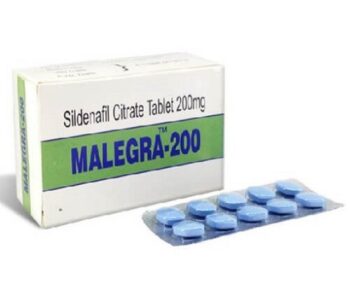 Health & Fitness
Health & Fitness
What Are The Latest Treatments Options For Aortic Stenosis?
Aortic stenosis is a serious condition in which the aortic valve in the heart narrows, restricting blood flow from the heart to the rest of the body. This narrowing of the valve increases the heart’s workload, potentially leading to complications like heart failure, fainting, and even sudden death if left untreated. As a result, seeking timely intervention is critical. Fortunately, there is a range of effective treatments for aortic stenosis, depending on the severity of the condition and the patient’s overall health. In this article, we will explore both traditional and new treatments for aortic stenosis, shedding light on the latest advancements in managing this condition.
Understanding Aortic Stenosis
Before diving into the treatment options, it is important to understand what causes aortic stenosis. This condition primarily occurs due to three reasons: aging (degeneration of the valve), congenital defects (such as a bicuspid aortic valve), and rheumatic heart disease. The narrowing of the valve can restrict blood flow, leading to symptoms such as chest pain, shortness of breath, dizziness, and fatigue. As the condition progresses, the symptoms can become more pronounced, and treatment becomes more necessary.
Traditional Treatments for Aortic Stenosis
- Medical Management: For mild aortic stenosis, doctors may recommend medical management, particularly if the patient is not yet symptomatic or if symptoms are mild. This often involves:
-
-
- Blood pressure medications: Medications like ACE inhibitors, beta-blockers, and diuretics help reduce the strain on the heart, making it easier for blood to flow through the aortic valve.
- Cholesterol-lowering drugs: Statins are often prescribed to lower cholesterol and prevent further damage to the heart’s blood vessels.
- Anticoagulants: In some cases, blood-thinning medications may be recommended to prevent blood clots from forming in the heart or other parts of the circulatory system.
- Blood pressure medications: Medications like ACE inhibitors, beta-blockers, and diuretics help reduce the strain on the heart, making it easier for blood to flow through the aortic valve.
-
- Aortic Valve Replacement (AVR): For moderate to severe cases of aortic stenosis, surgical intervention is often necessary. The most common approach is aortic valve replacement (AVR), which involves removing the damaged valve and replacing it with a prosthetic valve. This procedure can be performed either through traditional open-heart surgery or via a minimally invasive approach. There are two primary types of valves used in AVR:
-
-
- Mechanical valves: These valves are made from durable materials like metal or carbon and are designed to last a lifetime. However, patients with mechanical valves need to take blood-thinning medications for life to reduce the risk of clot formation.
- Biological valves: These are made from animal tissue (such as pig or cow heart valves) and may not last as long as mechanical valves, but they do not require lifelong blood thinners.
- Mechanical valves: These valves are made from durable materials like metal or carbon and are designed to last a lifetime. However, patients with mechanical valves need to take blood-thinning medications for life to reduce the risk of clot formation.
-
- AVR has proven to be highly effective in improving symptoms and survival rates for patients with severe aortic stenosis.
New Treatments for Aortic Stenosis
While traditional treatments, particularly AVR, have been effective for many patients, new treatments for aortic stenosis are offering hope for individuals who are not candidates for traditional surgery due to age, frailty, or other health issues. These advancements focus on less invasive techniques and innovative solutions that allow for quicker recovery and improved outcomes.
- Transcatheter Aortic Valve Replacement (TAVR): One of the most significant breakthroughs in the treatment of aortic stenosis is transcatheter aortic valve replacement (TAVR). TAVR is a minimally invasive procedure that involves replacing the damaged aortic valve using a catheter inserted through a small incision in the groin or chest. The catheter is used to position a new valve, typically a biological one, inside the old valve. This procedure does not require open-heart surgery, which makes it an excellent option for elderly patients or those with other health conditions that make traditional surgery risky.
- Balloon Valvuloplasty: For some patients, especially those who may not be suitable candidates for valve replacement, balloon valvuloplasty may be an option. This procedure involves inserting a balloon into the narrowed aortic valve and inflating it to widen the valve opening. While this does not permanently fix the problem, it can offer temporary relief by improving blood flow and alleviating symptoms.
- Transcatheter Valve-in-Valve (ViV) Replacement: Another new treatment for aortic stenosis is transcatheter valve-in-valve (ViV) replacement, which is used in patients who have previously undergone valve replacement surgery but experience complications or failure of the prosthetic valve. In this procedure, a new valve is placed inside the failing prosthetic valve, offering a less invasive solution than traditional valve replacement surgery.
- Stem Cell Therapy: Although still in the experimental stage, stem cell therapy holds great promise as a new treatment for aortic stenosis. Researchers are exploring the potential of using stem cells to regenerate damaged heart valves or promote tissue repair, possibly reducing the need for valve replacement surgeries in the future. While this treatment is not yet widely available, ongoing studies could lead to breakthroughs in the coming years.
- Biodegradable Valve Prostheses Another emerging treatment involves the development of biodegradable valve prostheses, which are designed to gradually dissolve within the body after they have served their purpose. This concept could potentially eliminate the need for multiple surgeries in younger patients, as the biodegradable valve would eventually be replaced by the patient’s own tissue.
Conclusion
Aortic stenosis is a serious and potentially life-threatening condition, but there are numerous treatments for aortic stenosis available to help manage the disease and improve quality of life. From traditional surgical interventions like aortic valve replacement to new treatments for aortic stenosis such as TAVR and stem cell therapy, advancements in medical science are offering patients more options than ever before. As research continues, patients with aortic stenosis can remain hopeful that even better treatments will emerge, providing less invasive, more effective solutions to this debilitating condition. It is important for individuals experiencing symptoms of aortic stenosis to consult with a cardiologist who can recommend the most appropriate treatment based on their specific needs.
for more(click here)









